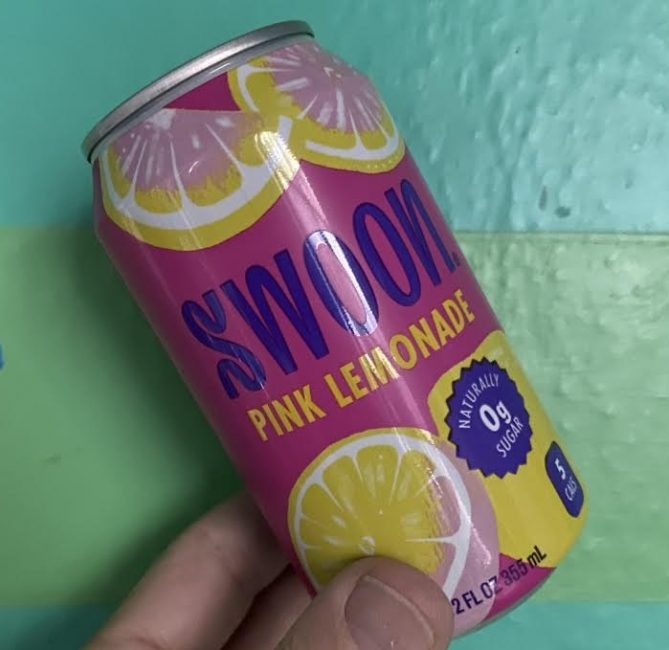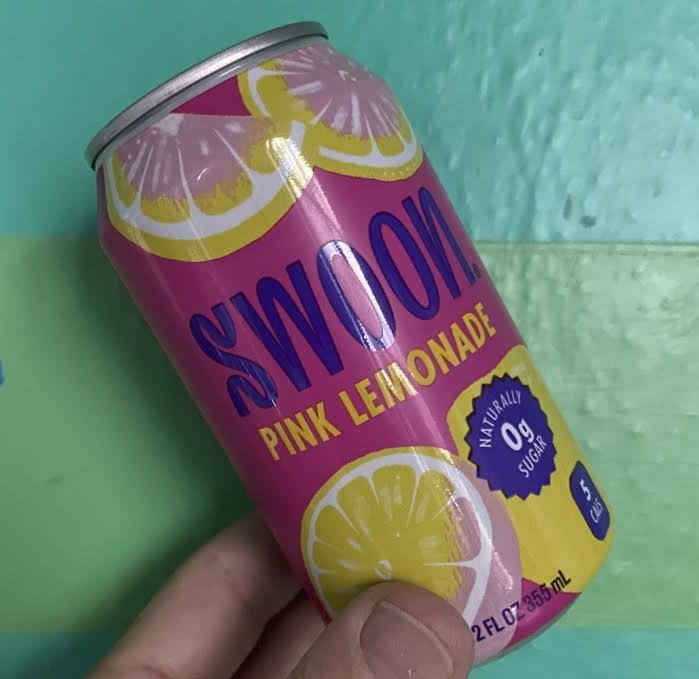On a hot Summer day, I picked up a can of Swoon Pink Lemonade at my neighborhood Bodega. I had never heard of Swoon before, but the bright colors and the big Zero Sugar caught my eye.
I googled the product and found out that Swoon co-founder Jen was diagnosed with Type 1 diabetes at a young age. She was on the hunt for delicious, zero-sugar drinks with little success. Cristina and her co-founder created a
sweet, fruity, tart, and deliciously flavored drink.
The only thing to note is that it does have a slight stevia aftertaste that tingles on your tongue. Apart from Pink Lemonade, Swoon offers exciting flavors like Lemonade, Ginger Lemonade, Half and Half, Peach Tea, Lemon Tea, Raspberry Tea, and Peach Tea.
What’s even cooler is that when you buy a case of Swoon online, they donate one can to a needy family through the nonprofit Wellfare and their first-of-its-kind Better Box program that’s improving access to convenient nutrition in low-income communities.

Frozen Watermelon Pink Lemonade Recipe
After a quick scan of the Swoon®. website, I stumbled upon this fun cocktail recipe! It’s easy-breezy, hot-pink, frosty, and delicious. You can add vodka or have it as a mocktail.
INGREDIENTS
2 pounds cubed watermelon
(about 4 cups)
1 12-ounce can pink lemonade, such as Swoon® Pink Lemonade
See Full Recipe
Many people consume more sugar than they realize. Our bodies don’t need sugar to function properly. The American Heart Association recommends limiting added sugars to no more than 6% of calories each day. For most American women, that’s no more than 100 calories per day, or about 6 teaspoons of sugar. For men, it’s no more than 150 calories per day, or about 9 teaspoons.
We’re talking about ‘THE SWEETEST TABOO’ aka ‘ADDED SUGAR’ with musical inspiration from Sade on this episode of Divabetic’s podcast. Podcast guests include Patricia Addie-Gentle RN, CDCES, Tameka Milline, Catherine Schuller AICI, CIP. Kathy Dolgin aka ‘High Voltage’, and Stephanie MacKendree. Throughout the podcast, we play music from ‘The Essential Sade’ album courtesy of SONY Music.









